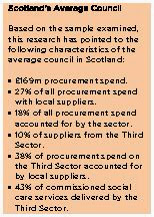Two instances stand out this week of how what UNISON does as a union isn’t just about benefitting our members but of making life better for everybody.
UNISON members at the Food Standards Agency – principally meat inspectors were on strike this week. The specifics of their dispute (and they’ve been treated fairly shabbily) are here. I won’t go into precisely what they do either, Dave Watson does thatin a series of blog posts here with illustrations that make tough viewing even for carnivores (ehhhhh yeah thanks for that Dave.)
The other example is cleaners. Here is a group of mostly part-time, mostly female and mostly always badly paid group of workers. They generally don't get much attention,but without them doing their jobs properly most workplaces and facilities would be unusable fairly quickly.The results of a survey we carried out of cleaners from a range of public services has been published as Dishing the Dirt. We asked them about their work not just about wages and living standards (the story there is as depressing as it is unsurprising). But what emerged strongly was that cuts have meant many cleaners in a whole range of buildings are unable to clean to the standard that they used to. They are switched to less efficient cleaning products – examples included being told to use washing up liquid rather than bleach, or even just water. Commonly they now have fewer people cleaning larger areas in less time. No surprise that either it doesn’t all get cleaned or isn’t cleaned to standards it might have previously. Morale needless to say has gone through the floor that’s not quite as spotless as it used to be.
What both these groups highlight is that cuts and pay freezes don’t just have an impact on the workers concerned, but on the public. Even a single glance (and most people won’t take two) of Dave Watson’s slides are enough to make it clear that we want meat inspectors well motivated, happy in their work and conscientious about their responsibilities. Because if these guys don’t find it, we end up eating it. Likewise – we want to be confident that the school our child attends, or the hospital we visit are cleaned to a standard that is hygienic and safe. Better terms and conditions for cleaners will mean cleaner buildings.
We need public services & public services are delivered by people. When UNISON is supporting workers in public services, that helps support the services as well. So the next time you hear anything on the news about UNISON – remember that the benefit of what we are trying to do , probably won’t just be felt by the workers involved, but by the public they deliver services to. So, usually it’s not just about us – it’s about you too.








